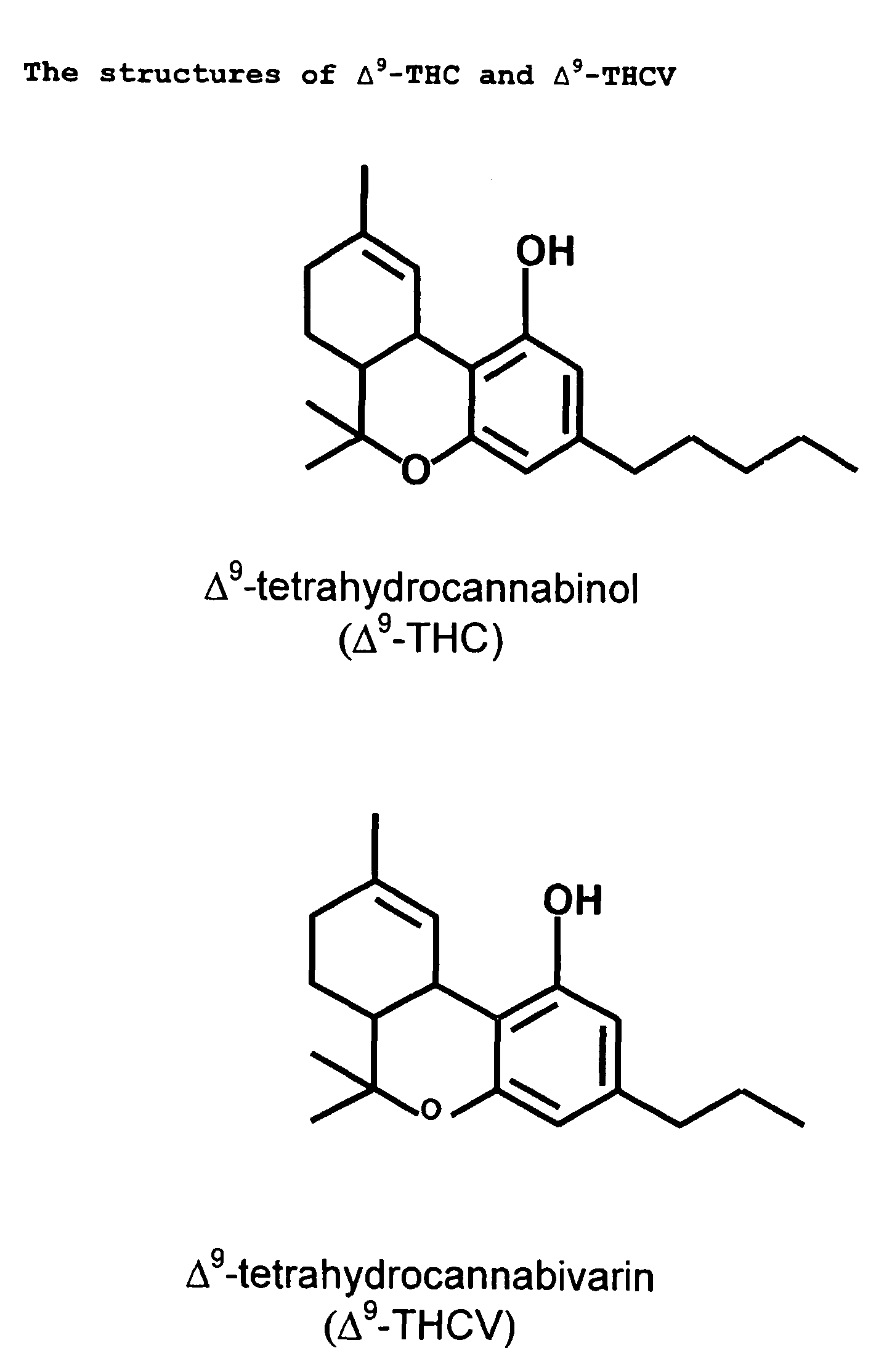Use for cannabinoid
a cannabinoid and cannabinoid technology, applied in the field of cannabinoid use, can solve the problems of affecting the cbsub>1 /sub>mediated aspects such as mood, sleep and pain relief, and users of sr141716a may be at an increased risk of cancer and stroke, and achieves reduced risk, reduced risk, and increased activity.
- Summary
- Abstract
- Description
- Claims
- Application Information
AI Technical Summary
Benefits of technology
Problems solved by technology
Method used
Image
Examples
Embodiment Construction
Investigation into the Effects THCV has Upon the Cannabinoid CB1 or CB2 Receptors
[0058]Experiments were performed with membranes prepared from healthy brain tissue, which is densely populated with CB1 but not CB2 receptors (reviewed in Howlett et al. 2002).
[0059]Further experiments were undertaken with Chinese hamster ovary (CHO) cells transfected with hCB2 receptors. These membranes were used to investigate the ability of THCV to displace [3H]CP55940 CB2 binding sites
[0060]These experiments were used to determine whether THCV behaves as a CB1 or CB2 receptor agonist or antagonist.
[0061]Experiments were also carried out with the mouse isolated vas deferens, a tissue in which cannabinoid receptor agonists such as R-(+)-WIN55212, CP55940, THC and 2-arachidonoyl ethanolamide (anandamide) can inhibit electrically-evoked contractions (Devane et al., 1992; Pertwee et al., 1995).
[0062]Cannabinoid receptor agonists are thought to inhibit the electrically evoked contractions by acting on pre...
PUM
| Property | Measurement | Unit |
|---|---|---|
| chromatographic purity | aaaaa | aaaaa |
| chromatographic purity | aaaaa | aaaaa |
| chromatographic purity | aaaaa | aaaaa |
Abstract
Description
Claims
Application Information
 Login to View More
Login to View More - R&D
- Intellectual Property
- Life Sciences
- Materials
- Tech Scout
- Unparalleled Data Quality
- Higher Quality Content
- 60% Fewer Hallucinations
Browse by: Latest US Patents, China's latest patents, Technical Efficacy Thesaurus, Application Domain, Technology Topic, Popular Technical Reports.
© 2025 PatSnap. All rights reserved.Legal|Privacy policy|Modern Slavery Act Transparency Statement|Sitemap|About US| Contact US: help@patsnap.com

